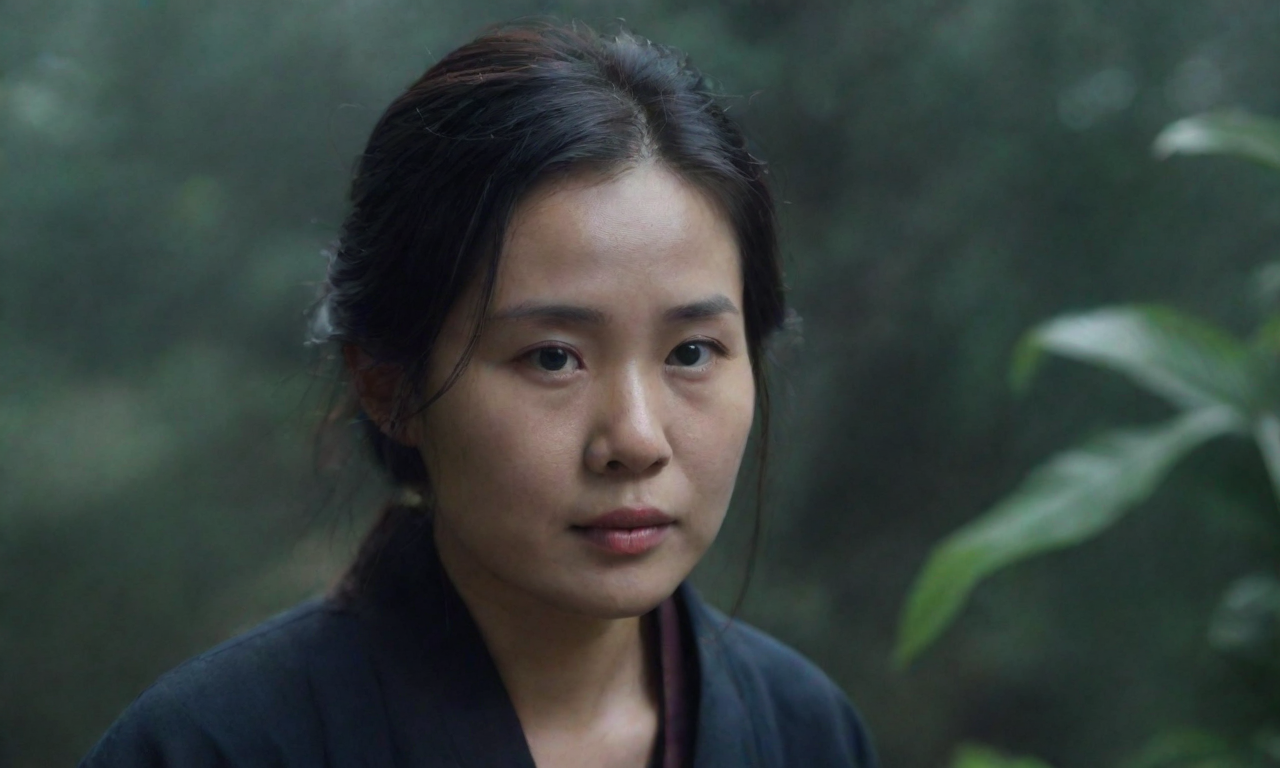The winter sun shines on a row of tall pillars in the courtyard of the School of Physics at Peking University, following the law of light propagating in a straight line, leaving clear and regular striped light and shadow on the ground.
Gong Qihuang, an optics expert, academician of the Chinese Academy of Sciences, and president of Peking University, often shuttle between light and shadow, pondering scientific questions about "light". Over the years, he has delved into the field of "nonlinear optics", understanding light, manipulating light, and exploring new frontiers in optical research.
"At that time, with the support of the National Science Fund for Distinguished Young Scholars (hereinafter referred to as the Young Scholar Program), I had obtained a valuable funding, which enabled me to purchase an advanced laser and provided a powerful tool for conducting nonlinear optical research." Recently, when reviewing his research career of chasing light and building dreams, Gong Qihuang told the "China Science Daily".
In January 1995, Gong Qihuang, a young scholar who was working as a postdoctoral researcher at the Institute of Physical and Chemical Research in Japan, received a visitor - Qiang Di, who was the director of the Department of Natural Sciences at Peking University at the time. As soon as they met, Qiang Di expressed the school's expectation for Gong Qihuang's return and development.
From Qiang Di, Gong Qihuang learned an important piece of information: the "Premier Fund" was about to start its application. In 1994, at the suggestion of scholars, the "Premier Fund" was established to support scientists in independently selecting and freely exploring research topics. Later, it was named the "National Science Fund for Distinguished Young Scholars".
"Qiang teacher also revealed that this project has strong support, totaling 600,000 yuan over three years." Gong Qihuang realized that this was a good opportunity!
At a time when many research projects only had funding of tens of thousands of yuan, 600,000 yuan was a significant amount for a young scholar starting from scratch.
With less than two months left before the deadline for submitting the application, Gong Qihuang dedicated himself to preparing the application. He detailed his vision for the next 3 to 5 years of research in the application, emphasizing the innovativeness and importance of his work. "These are the aspects that I value most now as a review expert," he said.
In March 1995, Gong Qihuang submitted the application as scheduled. A month later, he boarded the plane back home.
Shortly after returning to China, he received notice of the Young Scholar Program's defense. The defense was held on a rainy day in July 1995. Gong Qihuang braved the rain, wearing a raincoat and riding a bicycle to the defense venue.
"I'm really sorry to have called you here on a rainy day." Seeing Gong Qihuang soaked in water, Chen Jia'er, the deputy director of the National Natural Science Foundation of China at the time, who organized the defense, expressed concern. The care of the seniors eased Gong Qihuang's nervousness. The subsequent defense was rational and serious, with experts providing many targeted and constructive suggestions, including what kind of scientific instruments should be used to achieve these scientific goals.
Looking back, these opinions greatly inspired Gong Qihuang, who was only 31 years old at the time, and also provided help for his subsequent research work.
Soon after, good news came. Gong Qihuang successfully obtained the Young Scholar Program and received the "first bucket of gold" for conducting research upon his return. "I'm very happy to be able to do meaningful work now," he told the "China Science Daily".
Breaking with convention to purchase equipment
Gong Qihuang focuses on nonlinear optics. People's direct perception of light often stays on its "linear" characteristics, such as light propagating in a straight line in the same homogeneous medium, reflection and refraction phenomena occurring when light is incident on the surface of the medium. Light and light, light and matter do not interact with each other.
However, with the development of modern science, scientists have gradually revealed the complex "face" of light. When the intensity of light reaches a certain level, interactions between light and light, light and matter occur, exhibiting some characteristics called "nonlinear" that go beyond people's experiential perception. The study of the nonlinear behavior of light in strong light fields is an important branch of modern optics, and its development heavily relies on the advancement of research instruments.
Unfortunately, in the 1990s, due to the lack of relevant scientific research equipment domestically, scientists could only use simple lasers to carry out some basic work. This became the biggest obstacle for domestic nonlinear optics research to catch up with the international frontier.For this young scholar, the Young Scientists Project holds great significance. "First and foremost, it serves as motivation. Being recognized by so many experts has boosted my confidence," said Gong Qihuang. More importantly, he used the funding from this "timely assistance" project to acquire advanced equipment, creating favorable conditions for his "quest for light."
Gong Qihuang candidly expressed his gratitude for the support of the Young Scientists Project. "In a situation where I had nothing, the Young Scientists Project provided a solid starting point for my research work," he said.
Entering the top tier internationally
After taking the first step, Gong Qihuang led his research team to delve into the fundamental principles of nonlinear optics for several years, enabling cutting-edge research and driving the continuous advancement of this discipline in our country.
"The 21st century belongs to light," emphasized Gong Qihuang. In recent years, under his leadership, the research team has developed lasers capable of generating extremely short pulses, obtaining information on femtosecond-level ultrafast optical processes, and achieving control over light. Based on this, new technologies have been widely applied in physics, chemistry, biology, and other fields.
A series of original breakthroughs in basic science would not have been possible without the support of the National Natural Science Foundation projects. Over the years, in addition to the Young Scientists Project, Gong Qihuang has gradually obtained support from innovative research groups and major national research instrument development projects. Of course, receiving this support is not solely due to having received the Young Scientists Project, but rather a testament to the real strength of his scientific research.
In 2016, Gong Qihuang, as the project leader, was approved for the National Major Research Instrument Development Project "Femtosecond-Nanometer Spatio-Temporal Resolved Optical Experimental System" and successfully completed the project in 2022.
In simple terms, this "tool" allows us to observe extremely rapid changes in objects at very small spatial scales. While the human eye can distinguish objects as small as 100 micrometers, optical microscopes can reveal objects as small as 200 nanometers, and electron microscopes enable us to see objects as small as 0.1 nanometers. With this new system, it is like having a special ultra-high-speed camera with a resolution of 10 femtoseconds, which is 10 million times faster than high-speed cameras, while also possessing the spatial resolution capability of an electron microscope, allowing us to see structures smaller than 10 nanometers.
Gong Qihuang is pleased that the successful development of this system has placed our country at the forefront of this field, thereby expanding the boundaries of human understanding.
Boosting the rapid growth of young scholars
In recent years, under the leadership of Gong Qihuang, members of the research team have maintained a positive and united atmosphere for mutual discussion and inspiration. More than ten scholars have already received support from the Young Scientists Project.One of the recipients of the "Outstanding Young Scientist" project in 2023 is Wang Jianwei, a member of the post-80s generation. As a researcher at the Physics Department of Peking University, his research encompasses integrated quantum optics, photonic quantum chip physics, technology, and applications, with a focus on advancing the development of quantum information in China.
Wang Jianwei told China Science Daily, "The Outstanding Young Scientist project is not just a title, it is not only an affirmation of the individual, but also a selection and recognition of research directions."Regarding the phenomenon of some places and institutions viewing the Outstanding Young Scientist project as a mere "title," Gong Qihuang believes that this is not an issue with the project itself, but rather due to the incomplete academic evaluation system. Undoubtedly, the Outstanding Young Scientist project has produced excellent results in selecting and nurturing outstanding talents, with a number of outstanding individuals emerging from the project. It is precisely because they are outstanding that they have obtained the Outstanding Young Scientist recognition. However, there have been cases where the evaluation of talent has been skewed, with the Outstanding Young Scientist project being seen as merely a "title" as resources are disproportionately allocated to those who receive it. We can see that there are indeed a few "gems" who have not received the Outstanding Young Scientist recognition, and they also need to be "discovered" through effective evaluation methods. Gong Qihuang pointed out. As the university president, he attaches great importance to the growth and development of young teachers, and has made significant efforts to optimize the evaluation system and inspire talent. In recent years, Peking University has constructed and continuously improved the comprehensive talent system that covers top talent, leading talents, and outstanding young talents based on its own circumstances. Among them, the appointment of "Boya Distinguished Professors" opens a separate path for scholars who have not received the Outstanding Young Scientist recognition but have impressive achievements, providing them with equal treatment, and striving to create a more pure academic atmosphere for outstanding talents. In 2023, the National Natural Science Foundation launched new policies, aiming to highlight the project-based attributes of the Outstanding Young Scientist project, and major reforms are underway. Starting from 2024, there will be a hierarchical evaluation and continued funding for the completion of Outstanding Young Scientist projects, selecting and supporting excellent projects within the program, with the highest funding intensity reaching nearly 30 million RMB over 15 years, focusing resources to cultivate and nurture high-level leading talents. The scientific community widely anticipates the implementation of these measures. By selecting outstanding young scholars through the Outstanding Young Scientist project and providing support when they need it the most, we can help them grow into excellent scientists as quickly as possible, never forgetting the original purpose of talent cultivation. Gong Qihuang emphasizes. In the face of the ubiquitous "competition frenzy" in society today, Gong Qihuang has this message for young scholars: "I hope that young people will focus on academic research, concentrate their attention on science itself, and believe that they will definitely reap rewards!"China Science Daily (February 28, 2024, Natural Science Foundation, 4th Edition)
Editor | Zhao LuLayout | Zhi HaiPlease scan the QR code below for 3 seconds.
Wang Jianwei told China Science Daily, "The Outstanding Young Scientist project is not just a title, it is not only an affirmation of the individual, but also a selection and recognition of research directions."Regarding the phenomenon of some places and institutions viewing the Outstanding Young Scientist project as a mere "title," Gong Qihuang believes that this is not an issue with the project itself, but rather due to the incomplete academic evaluation system. Undoubtedly, the Outstanding Young Scientist project has produced excellent results in selecting and nurturing outstanding talents, with a number of outstanding individuals emerging from the project. It is precisely because they are outstanding that they have obtained the Outstanding Young Scientist recognition. However, there have been cases where the evaluation of talent has been skewed, with the Outstanding Young Scientist project being seen as merely a "title" as resources are disproportionately allocated to those who receive it. We can see that there are indeed a few "gems" who have not received the Outstanding Young Scientist recognition, and they also need to be "discovered" through effective evaluation methods. Gong Qihuang pointed out. As the university president, he attaches great importance to the growth and development of young teachers, and has made significant efforts to optimize the evaluation system and inspire talent. In recent years, Peking University has constructed and continuously improved the comprehensive talent system that covers top talent, leading talents, and outstanding young talents based on its own circumstances. Among them, the appointment of "Boya Distinguished Professors" opens a separate path for scholars who have not received the Outstanding Young Scientist recognition but have impressive achievements, providing them with equal treatment, and striving to create a more pure academic atmosphere for outstanding talents. In 2023, the National Natural Science Foundation launched new policies, aiming to highlight the project-based attributes of the Outstanding Young Scientist project, and major reforms are underway. Starting from 2024, there will be a hierarchical evaluation and continued funding for the completion of Outstanding Young Scientist projects, selecting and supporting excellent projects within the program, with the highest funding intensity reaching nearly 30 million RMB over 15 years, focusing resources to cultivate and nurture high-level leading talents. The scientific community widely anticipates the implementation of these measures. By selecting outstanding young scholars through the Outstanding Young Scientist project and providing support when they need it the most, we can help them grow into excellent scientists as quickly as possible, never forgetting the original purpose of talent cultivation. Gong Qihuang emphasizes. In the face of the ubiquitous "competition frenzy" in society today, Gong Qihuang has this message for young scholars: "I hope that young people will focus on academic research, concentrate their attention on science itself, and believe that they will definitely reap rewards!"China Science Daily (February 28, 2024, Natural Science Foundation, 4th Edition)
Editor | Zhao LuLayout | Zhi HaiPlease scan the QR code below for 3 seconds.








